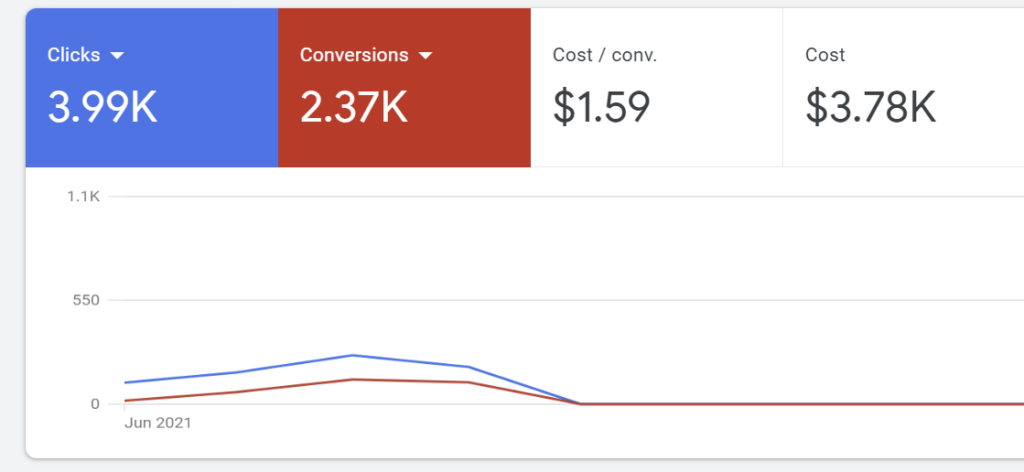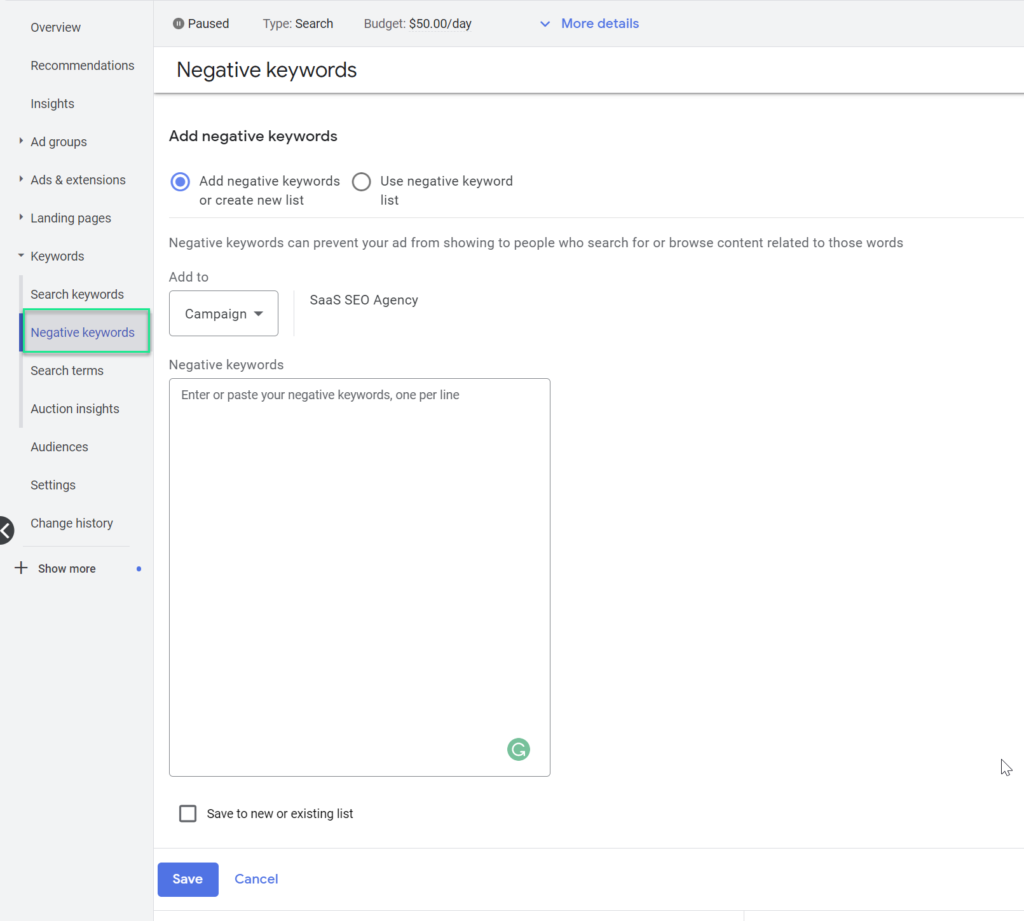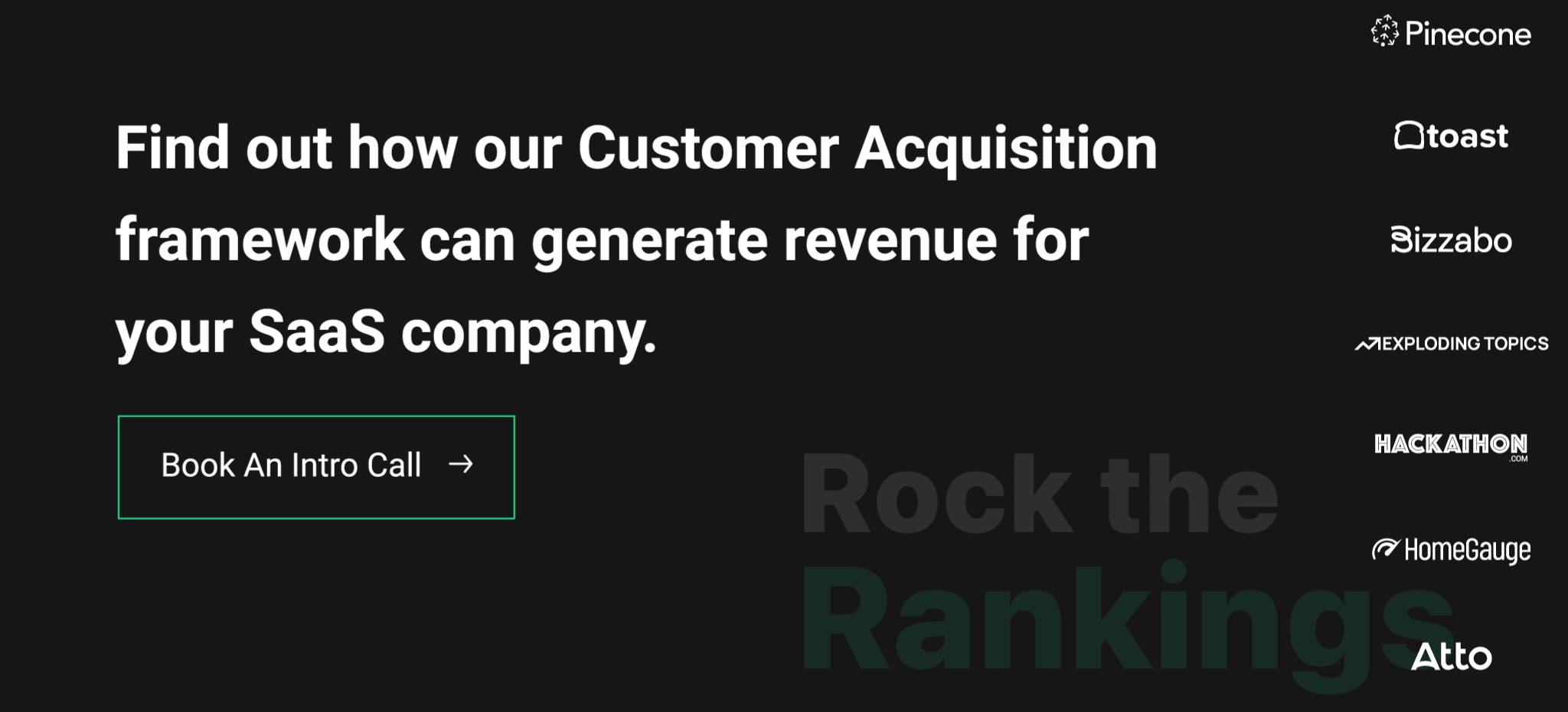PPC advertising for SaaS can be a very effective way to scale MRR fast.
When you have a solid product-market fit, your copy and offer is dialed in, and you have the right PPC strategy in place, it’s basically like shooting fish in a barrel.
Having worked one-on-one with a dozen of SaaS companies over the past few quarters, we’ve found that they usually fall into one of two following categories when it comes to PPC advertising:
We’re going to take a deep dive into addressing the challenges of these two categories, and how you can build a scalable and predictable PPC SaaS strategy that drives measurable revenue growth.
Let’s dive in. 👇
From working closely with dozens of SaaS companies on their PPC campaigns, and inheriting past campaigns that have underperformed, and even failed, here are the three most common reasons we’ve seen why it’s happened.
Paid advertising can be a reliable driver of revenue short-term, and often has a quicker return on investment compared to SEO and content marketing, but still – it’s not magic.
Many SaaS companies pull the trigger way too fast on making changes to their PPC campaigns before allowing enough time to review and measure performance over a longer horizon:

Even more so, they’ve established no initial expectations or a baseline indicator for the performance of the campaign, and quickly make changes due to a high CPC, or a low amount of impressions.
This is the stage where the budget gets oftentimes gets reduced, and they move on to a whole other channel and write it off as a loss.
In order to mitigate this from happening, there have some be some clear expectations from the getgo, and a baseline for the performance of the campaigns.
When there is no baseline, decisions are made abruptly before there was even enough time for the campaign to properly get off the ground.
If you’re just starting out running paid ads, and you have no past historical data, starting out by optimizing for bottom-of-the-funnel keywords with the intent to drive trial signups or demos is going to hurt you.
Google Ads and other advertising platforms need time to collect data for your campaigns in order to learn more about your audience, and what’s a valuable click vs. what’s not.
If you’re optimizing for demo and trial signups out of the gate, your ads are going to be shown to a handful of individuals that are not potentially quality prospects, and you’ll be paying a higher cost per click as you’ve focused on driving conversions.

Starting out a new campaign, you want to be focused on optimizing around engagement, and not conversions, meaning focused on:
This will give Google Ads time to learn which clicks are quality clicks, based on the user’s actions after they’ve visited your website and have been taken to your ad’s landing page.
Many SaaS organizations often choose too small of a target audience when they set up their targeting.
An example of this would be setting very narrow targetting on one singular audience with the following attributes:
When we set very narrow targetting, we limit the total available audience to whom our ads are displayed to a very small pool of individuals.

Very narrow audiences come normally with high competition, which translation to high costs per click (CPC).
But why would we want to target anyone who doesn’t fit our ICP?
When you expand who you are targetting to be a bit less narrow, you’ll be able to decrease your cost per click.
Although the targeting on most ad platforms is quite advanced, you’re always going to be cutting out a subset of your audience that doesn’t fit into your defined criteria based on the ad platforms dataset.
The second cold hard fact here at play is that advertisers make money by serving more people more ads.
You’re essentially going to be penalized in the form of cost per click when you target too narrowly.
This translates to minimal impressions, at a high cost with usually no ROAS.
👉 Struggling to get your ad campaigns to convert and drive revenue? Need a second look and help optimize your existing campaigns to scale MRR faster? We can help you to overcome those roadblocks, and start growing faster. Schedule a Free Grow Faster Session with our veteran SaaS marketing team.
In the world of search, taking up the most possible real estate with quality placements is a sure way to win.
SEO and PPC play well together, where SEO is a long-term growth strategy that can take a longer time for payback but PPC will allow you to quickly reach your target audience with relevant content.
Implementing a well-rounded PPC strategy can allow SaaS companies to hit their goals faster, all while scaling SEO efforts up on the flipside.
There’s a large overlap of the objectives as well as the actions between both SEO and PPC campaigns, where for example you’re optimizing a landing page for a quality score, but also are attempting to rank it in organic search and not only paid search.
You’re going to spend time re-optimizing the page and copy, so you might as well build it to win at both.
Improving your SaaS PPC campaigns that decrease CPC and drive up RoAS can be achieved through building around the following cornerstone strategies and tactics.
If we’re not hitting the right audience with our ads, we’re not going to see results from our campaigns, and we’re going to waste a whole lot of ad budget in the process.
Tailoring ads to our target audience is built around keyword research, and mapping those back accordingly to our ad groups and content types.
By mapping out our keyword bidding strategy, we can then optimize our ad copy for each of our ad groups in order to build copy that speaks directly to our audience.
Related Content: Keyword Research for SaaS
Through conducting proper keyword research and mapping, we’re ensuring that:
Continually refresh, and update the ad copy here for best effectiveness, and to avoid ad fatigue in each of our audiences.
Building on your competitor’s branded search terms is an extremely effective way to capture additional search volume when your organization has little to no brand awareness.
Creating effective competitor comparison landing pages can be a great way to showcase what your SaaS product does better, and to allow your business to control the narrative when potential customers are deep in the research phase and looking at comparing features, pricing, and other core benefits of the product.
A great example of this is when a competitor has increased their pricing, and users are likely to be searching for alternative options to the competitor’s product.
Users typically will search for “company alternatives” to research what other offers are out on the market:

This is the perfect time to be in front of your audience and potential prospects as they’re considering making a switch.
Related Content: Competitor & Alternative Pages for SaaS
Creating and running paid ads against these keywords with the help of competitor comparison and alternative pages is a very strong value to capture and convert that volume.
Negative keywords are an extremely effective way to optimize your campaign and specifically tell Google which keywords you don’t want your ads to show up for.
Additional to negative keywords, audience exclusion allows us to determine audiences that are not a fit for our ads, and ensure our ads are not being displayed to this ad group.

Negative keywords are an easy PPC optimization quick win where we see a lot of ad budget is wasted due to a lack of usage.
An example of using negative keywords would be for a B2B SaaS organization that provides accounting software to small businesses.
We’d want to add “enterprise” as a negative keyword so that our ads are not shown for searches that include the query “enterprise”.
Without using negative keywords and audience exclusions, we’re most likely contributing to wasted ad budget simply by showing our search ads to non-relevant audiences that are clicking and are not a good fit.
We can come up with a list of negative keywords and audience exclusions simply by brainstorming which audiences and potential queries would be a bad fit for our product.
As we have historical ad data to review, we can review based on non-converting users to find common queries that are most likely causing these quicks to be a bad fit, and exclude them from being shown our ads.

We know it takes multiple touchpoints before a micro conversion occurs, and that’s why re-targeting is important to continually run different offers and re-engage our audiences using our ad campaigns.
Retargeting allows us to reconnect and reengage with audiences that have interacted with our ads and website.
Through setting up retargeting, we should be focused on targeting our audiences at the different stages of the marketing funnel, starting from the top-funnel awareness stage, down to the bottom-funnel conversion point.
We generally recommend SaaS organizations that are hyper-focused on SEO and content marketing use the power of retargeting users to reengage with our website and brand as it’s cost-effective and is an extremely powerful way to reengage over time.
Optimizing your PPC landing pages is a crucial aspect of maintaining a high-quality score on Google Ads, and ensuring that your ads are being served more often, and to the right audience at the lowest cost per click.
We can’t just direct different audiences to one-single landing page and hope for the best.
We should be creating and testing landing pages for our ad campaigns that meet our exact ad objective and speak to our audience.
Think about what the one singular action is, build copy around the common pain points that the audience has, and drive users to one-singular action.
We’ll know how the landing page performs overtime and we’ll be able to optimize around Google’s Quality Score of our ads and the landing page itself based on conversion rate data provided:

Google’s Quality Score is based on three factors:
Each component is evaluated with a status of “Above average,” “Average,” or “Below average.” This evaluation is based on a comparison with other advertisers whose ads showed for the exact same keyword, over the last 90 days.
If one of these components has a status of “Average” or “Below average,” this indicates a core area for improvement.
Once we’ve locked in our paid marketing strategy, and have performance tracking in place these are the five core areas we look to optimize for our B2B SaaS clients:
Improving CTR is the quickest path towards driving cheaper conversions, and improving return on ad spend (RoAS)
When looking at running Google Ads, we have to ensure that we have a high-quality score in order to drive more quality impressions at a lower cost.
Improving CTR comes through having the right targetting with the right message.
When Google Ads understands that we’ve nailed down these two core aspects, they’re going to serve up our ads to more people, at a cheaper cost per click.
By keeping a high quality score across our ad groups, we’re able to drive impressions and clicks and keep our cost per click as low as possible.
Higher quality scores translate directly that our ad and landing page are highly relevant and useful to the users that are searching for the given query, compared to other advertisers bidding on that ad set.
Any ad groups that have an average or below average quality score are easy wins for re-working the two core Quality Score factors we can influence:
Higher quality scores translate to cheaper cost per clicks, and higher return on ad spend (RoAS).
If you’re running the exact same ads over and over again for months at a time, you’re creating ad fatigue with your audience, and most likely annoying your audience and creating a disservice for reaching your goals.
In order to combat ad fatigue, we work to create new ad copy every 4 weeks, which also allows us to improve our messaging and targetting based on past campaign performance.
Changing our headlines, copy and CTAs help us to reduce the chances of annoying our audience, and running into dreaded add fatigue.
We want to further eliminate wasted ad budget through optimizing for keywords we know we should not be bidding on, and audiences we don’t want to be showing our ads to – all while finding a balance to keep our impressions high and relevant, and cost per click as low as possible.
In our experience, most clients have not implemented negative keywords or audience exclusion to help reduce wasted ad budget, and by drilling into historical data and brainstorming, we can easily pull these out to ensure we’re serving our ads to relevant users.
This is an easy win to reduce ad spend while improving revenue generated from our PPC ads.
PPC for SaaS is no silver bullet, but when properly set up, given time to perform, and constantly optimized over time, they can return high multiples on return on ad spend.
Most SaaS businesses want to move fast when it comes to PPC, and that’s fine, but it’s crucial to understand where to first prioritize and take action to meet success.
It’s also important to properly set baselines for the performance of the campaigns and allow time for your campaigns to really flourish.
Whether you’re already working with a PPC agency, or handling your paid marketing efforts in-house, having a framework for ongoing optimization is crucial for success.

Founder of Rock The Rankings, an SEO partner that helps B2B SaaS brands crush their organic growth goals. An avid fan of tennis, and growing micro-SaaS businesses on the weekend. 2x SaaS Co-Founder – Currently working to build and scale Simple Testimonial.
Book a 1-on-1 call with our founder and walk away with a custom plan built for your business. Growth starts now.
BOOK INTRO CALL